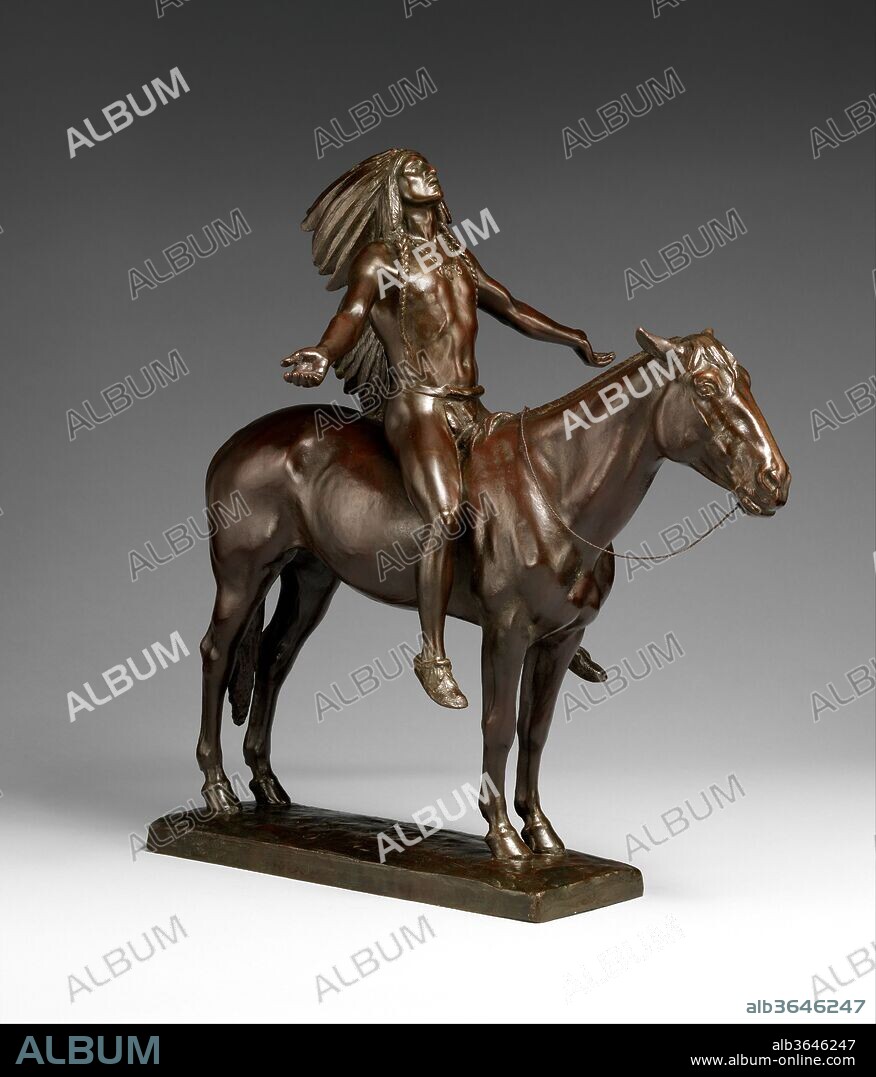alb3646247
CYRUS EDWIN DALLIN. Appeal to the Great Spirit

|
Ajouter à une autre Lightbox |
|
Ajouter à une autre Lightbox |



Avez-vous déjà un compte? S'identifier
Vous n'avez pas de compte ? S'inscrire
Acheter cette image.
Sélectionnez l'usage:

Auteur:
Titre:
Appeal to the Great Spirit
Légende:
Voir la traduction automatique
Appeal to the Great Spirit. Artist: Cyrus Edwin Dallin (Springville, Utah 1861-1944 Arlington Heights, Massachusetts). Dimensions: 21 3/8 × 14 1/2 × 21 3/4 in. (54.3 × 36.8 × 55.2 cm). Date: 1913; cast ca. 1916.
Born in Utah Territory and trained in Paris and Boston, Cyrus Edwin Dallin is best known for his dignified sculptures of American Indians. Appeal to the Great Spirit is an iconic representation of a mounted chief, his arms spread wide in a moment of individual communion with a higher power. In Dallin's own words, he captured the moment when the chief made his "final appeal to the Great Spirit for peace with the white man" after "his signal of peace...had been rejected." This statuette is a reduced version of a life-size monument installed in front of the Museum of Fine Arts in Boston in 1912. It is the fourth and final in a series of equestrian sculptures that Dallin completed between 1890 and 1909, which he collectively called The Epic of the Indian. In the first quarter of the twentieth century, over 400 authorized small-scale bronze casts of Appeal to the Great Spirit were produced, in three different sizes, testament to the commercial popularity of sculptures depicting the Old West.
Technique/matériel:
Bronce
Musée:
Metropolitan Museum of Art, New York, USA
Crédit:
Album / Metropolitan Museum of Art, NY
Autorisations:
Modèle: Non - Propriété: Non
Questions sur les droits?
Questions sur les droits?
Taille de l'image:
3461 x 4044 px | 40.0 MB
Taille d'impression:
29.3 x 34.2 cm | 11.5 x 13.5 in (300 dpi)
Mots clés:
 Pinterest
Pinterest Twitter
Twitter Facebook
Facebook Copier le lien
Copier le lien Email
Email
